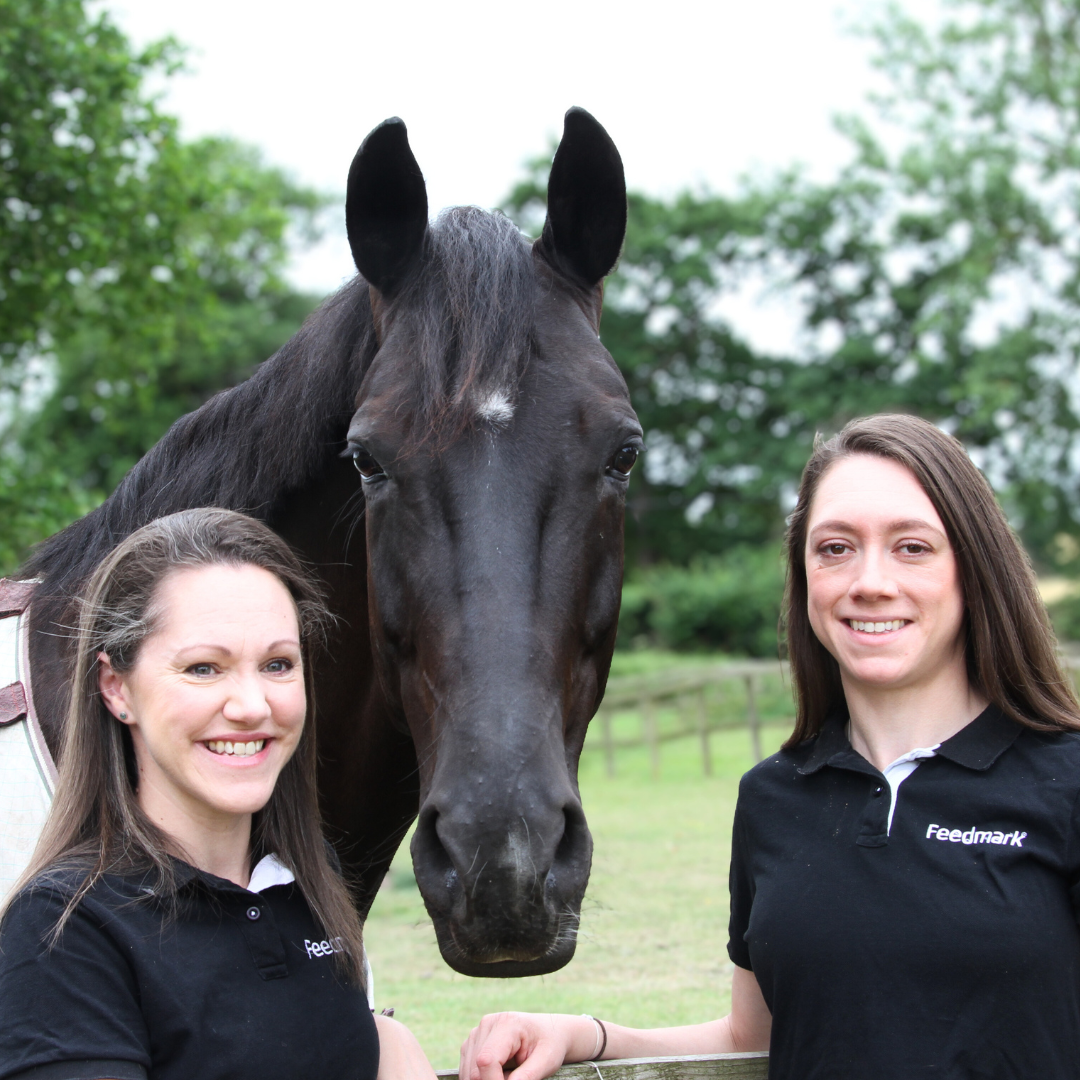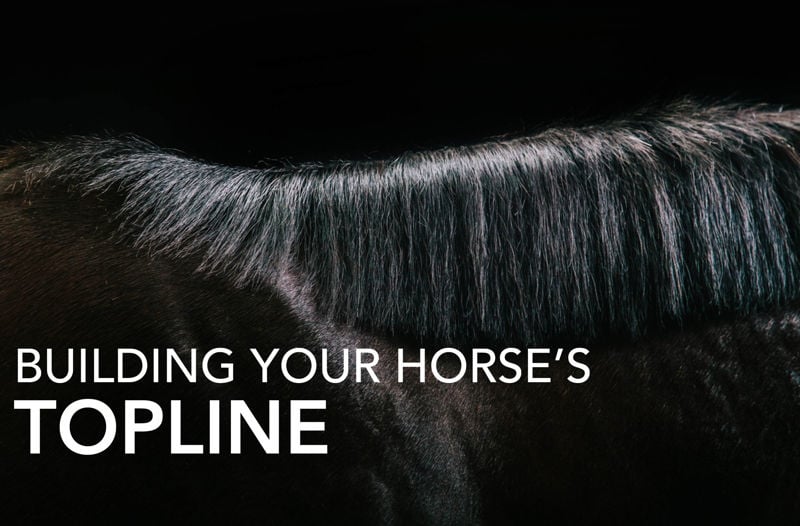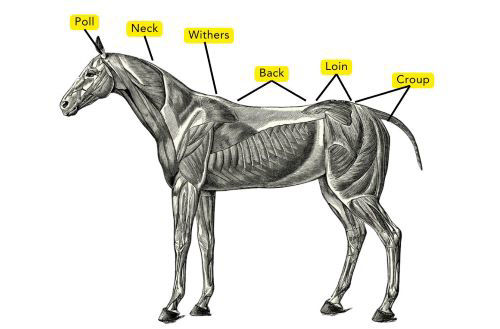What is the horse's topline and why is it so important?
The topline refers to the essential group of muscles running along a horse’s spine, starting at the pole, running down the neck, passing over the withers, along the back and loin, and finishing at the croup above the hips.
These muscles are vital for the horse’s movement, balance, and overall performance. They provide stability to the spine, particularly when the horse engages its hindquarters. If a horse’s topline is weak, it can lead to reduced mobility, decreased performance, and an increased risk of injury.
Knowing the difference between a crest and topline is very important. Topline is built via the strengthening of a group of muscles that run from the poll along the horses back to the croup. This is very different to a crest which is made of adipose (fatty) tissue. A cresty neck is a warning sign that a horse is overweight and is likely to have an increased risk of metabolic issues. It is also important to remember that fat does not turn to muscle so a cresty neck will never turn into topline. Fat feels spongy where as muscle feels hard.
Strengthening your horse’s topline is crucial for maintaining optimal condition, supporting flexibility, and promoting long-term health. Balanced nutrition and targeted exercises can help build and maintain a strong topline in horses.
Understanding muscle anatomy in horses:
There are three types of muscles found within the horse; skeletal muscle, which is responsible for skeletal movement, smooth muscle which is found within organs (this type of muscle is not controlled consciously) and cardiac muscle which is found within the heart making up the think middle layer of this organ.
Skeletal muscle is what enables us and our horses to move and is also involved in posture and respiration (breathing). In addition, skeletal muscle is required for storing nutrients and plays a role in maintaining body temperature.
These muscles are made up of long fibres bundled together and wrapped in a covering made of connective tissue, which is called a fascicle. Within the fascicle lies individual muscle fibres, each one is surrounded by a layer of connective tissue known as the endomysium. Between the fascicles of the muscle sits another connective tissue known as the perimysium, blood vessels can also be found in this space. The whole muscle is encased by a thick, cartilage-like connective tissue, known as the epimysium. Both ends of the muscle are usually attached to bone via a tendon.
The science behind building muscle in horses:
Muscle building is an interesting process known as hypertrophy. This process occurs when muscle fibres sustain microdamage. The body will fuse the fibres together, creating larger muscle mass.
However, overworking the muscles before they have a chance to repair can result in serious damage, which is why following a training programme and allowing the horse to have time to rest in between sessions is important.
Protein is also considered crucial when muscle building, this is because protein is made up of amino acids which are the building blocks of muscle, helping in the process of repairing damaged muscle fibres. Some studies in human research suggest that consuming protein immediately after exercise can help to improve muscle building.
It is important to note that muscles will only increase in size and mass with exercise. Ridden work is one of the best ways to build muscle - including hill work and poles can encourage the horse to build muscle and topline faster. This is another reason why it is important to vary your horse’s workload. If you can’t ride your horse, then groundwork such as lunging and long reining will also help encourage muscle building.
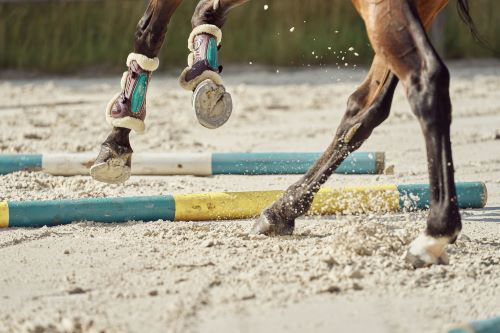
Pole work is great for building your horse's muscles.
Top tips for building your horse's topline from Feedmark's Equine Director and Chartered Physiotherapist, Rebecca Townsend:
1. Working over the back:
Working over the back is vital so that the core muscles are engaged and the hind legs can come sufficiently under will help to improve topline.
2. Transitions:
Transitions between the paces and within the pace will be key to improving topline but other activities such as pole work and hill-work can help enormously.
3. Correctly Fitting Tack:
Ensuring the tack is fitted correctly is vitally important because any pain has an inhibitory effect on muscles and will cause muscle wasting.
4. Sufficient warming up:
Warm up the muscles up so there is less likelihood of injury. Cold muscles are tighter and can get sore easily.
5. Stretching:
Stretching is beneficial whether from the saddle or from the ground and it’s important it’s done equally to the left and right. Unfortunately, horses aren’t perfectly symmetrical but stretching can help to even them up. The benefits of stretching are enormous!
Muscles that are correctly warmed up and given time to accommodate will stretch without injury. Always listen to your horse when doing stretches with carrots or treats and do them slowly. A flexible muscle and horse is less likely to sustain a muscle strain.
Stretching improves the joint's range of motion and enables them to maintain their optimal anatomical alignment, which helps them operate without abnormal stresses. This is particularly important when weight bearing.
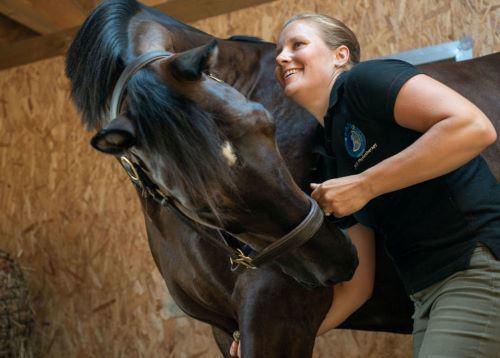
Feedmark Muscle Treats are great for encouraging your horse to stretch!
6. Patience:
Building your horse's topline and muscle strength won't happen over night! As you work through the levels the horse’s topline will improve as the horse will begin to take more weight on its hind legs.
For any advice or questions you may have, please don't hesitate to reach out to our expert nutrition team. You can call 0800 585525 Monday-Friday 8:30am-5:00pm. Email [email protected], or send us a DM on social media.

